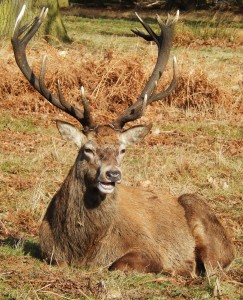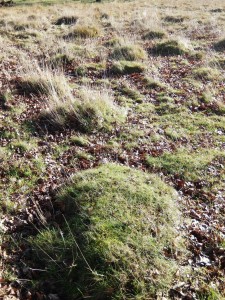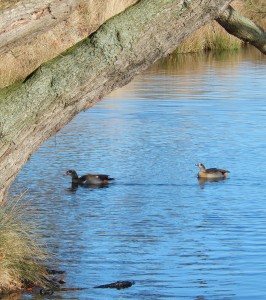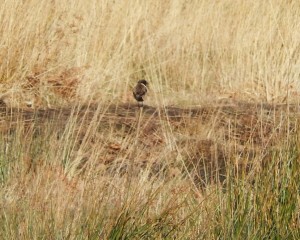
In Scotland, the male of the Red Deer is called simply a Stag, all other male deer (presumably Roe in that country) being known as Bucks. Down here, with Sika and other species about, it may be wise to name the species explicitly. There are signs up warning of the impending cull, so now may be the best time of year to see fine large stags resting quietly, the rut over.

I was welcomed to the park by a flock of Jackdaws chattering in the trees. Down in the valley, last year’s grass stalks are whitening, the fine big anthills well outlined in the low winter sunlight.
A Stonechat was perched on a slender stalk, level with the tops of the grass; there cannot be much in the way of insect food to catch just now.

On the Pen Ponds, there were remarkably few waterfowl of any kind, but the lower pond had half-a-dozen Pochard. the males handsomely rufous-headed, a pair of Wigeon, the male with a conspicuous white wing-bar, and tucked in a corner under the willows a pair of Egyptian Geese, taking to the water and protesting with short dry honks when molested by a dog.

Walking back up the hill, a Kestrel hovered briefly, rested in a tree giving a good view of his spotted breast and back. Two herds of Red Deer, one at the base of the hill, one at the top, both with all ages and both sexes together, grazed silently. In the muddiest places, footprints of men, dogs and deer clustered together.
